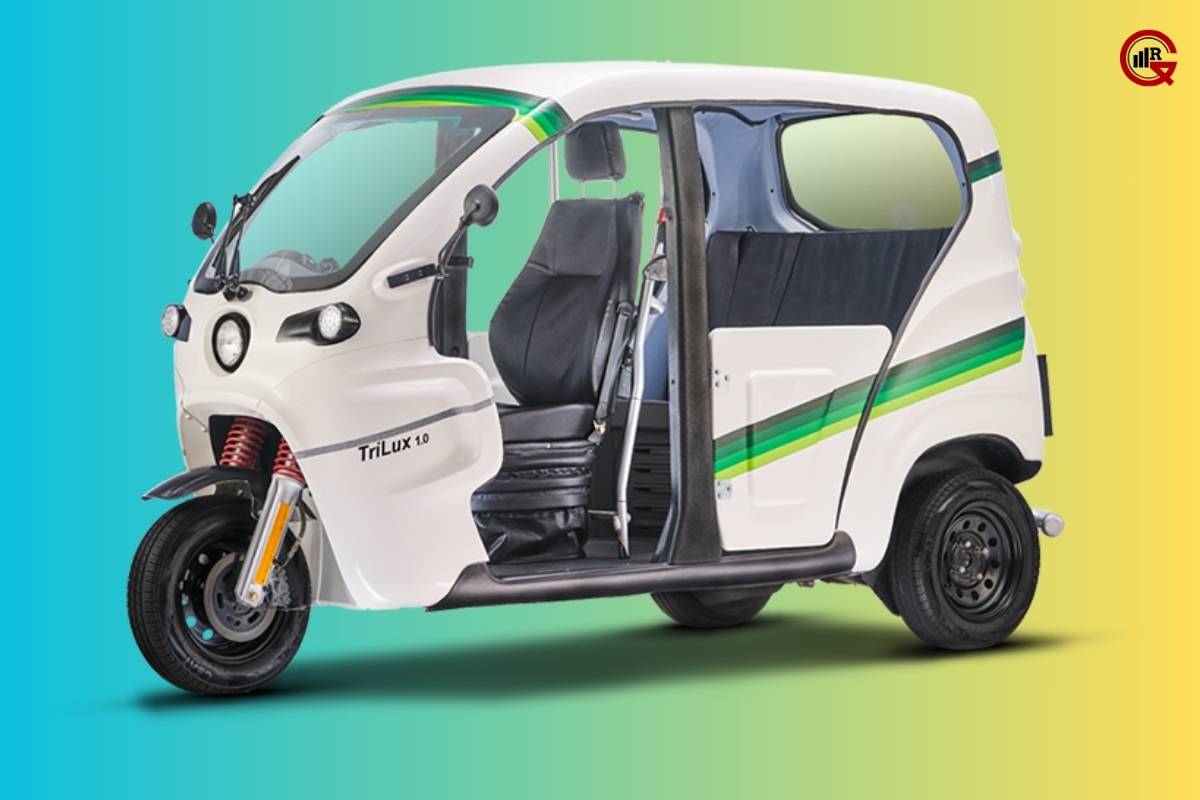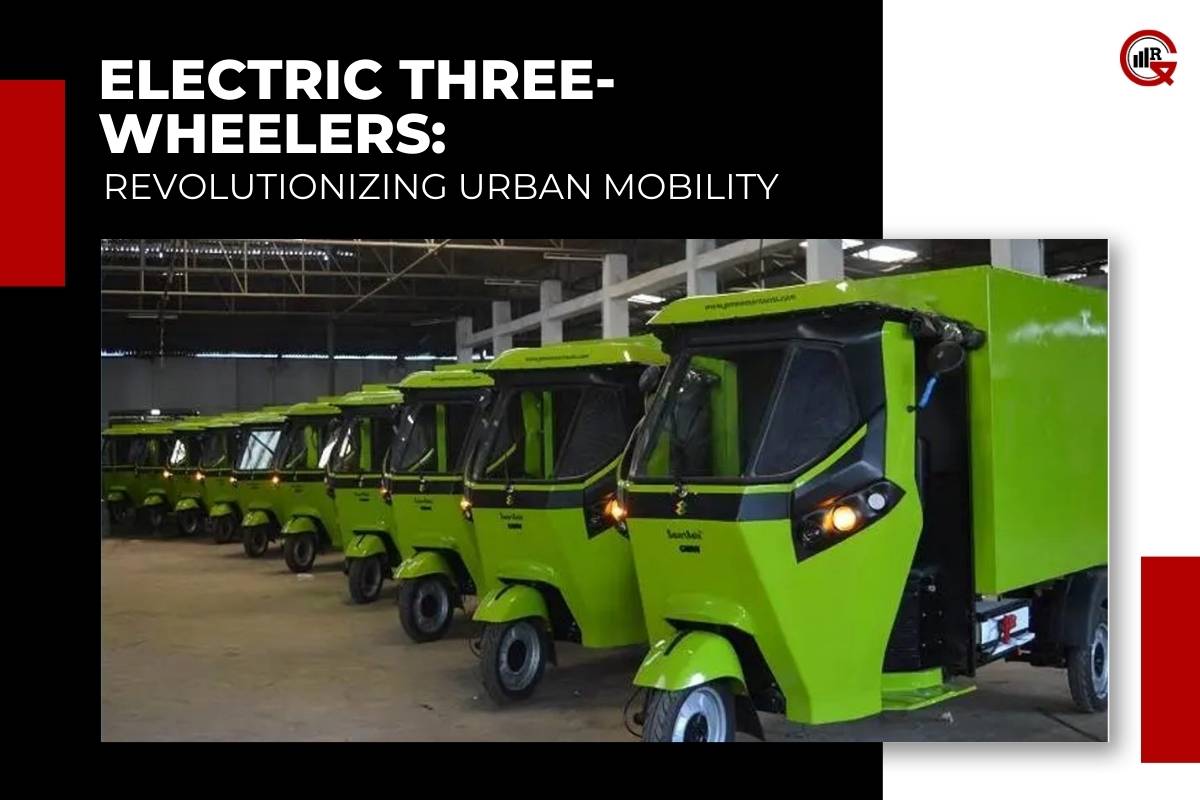(Source-.logisticsinsider.in)
In the ever-evolving landscape of urban transportation, electric three-wheelers have emerged as a sustainable, efficient, and versatile solution for navigating city streets. These compact vehicles, also known as e-rickshaws or auto-rickshaws, offer a convenient mode of transportation for passengers and goods alike, while also reducing emissions and congestion in crowded urban areas. This article explores the rise of electric three-wheelers, their benefits, challenges, and their potential to transform urban mobility.
The Emergence:
Electric three-wheelers have a rich history, with roots tracing back to traditional cycle rickshaws and auto-rickshaws found in many parts of Asia and Africa. However, the advent of electric propulsion technology has transformed these humble vehicles into eco-friendly alternatives to conventional gasoline-powered models. Electric rickshaws typically feature a battery-powered electric motor, offering zero-emission transportation without compromising on performance or reliability.
Benefits of Electric Three-Wheelers
The adoption of three-wheelers brings a multitude of benefits to both passengers and the environment. Firstly, electric vehicles produce no tailpipe emissions, helping to improve air quality and reduce pollution in urban areas. This is particularly important in densely populated cities where vehicular emissions contribute significantly to air pollution and public health issues.

Secondly, electric rikshaws offer lower operating costs compared to their gasoline counterparts. With fewer moving parts and no need for gasoline or diesel fuel, electric vehicles require less maintenance and have lower fueling costs, making them an attractive option for drivers and fleet operators looking to reduce their operational expenses.
Additionally, electric rikshaws are well-suited for navigating congested urban streets, thanks to their compact size and maneuverability. This makes them ideal for short-distance trips, last-mile connectivity, and transportation in narrow alleys and crowded marketplaces where larger vehicles may struggle to access.
The Role in Sustainable Transport
As cities around the world grapple with the challenges of urbanization, congestion, and pollution, electric three-wheelers offer a sustainable solution for meeting the growing demand for affordable, efficient transportation. By replacing conventional gasoline-powered vehicles with electric alternatives, cities can reduce their carbon footprint, improve air quality, and create a more sustainable transportation system for all residents.
Furthermore, electric rikshaws play a crucial role in addressing the last-mile connectivity gap, providing an accessible and affordable transportation option for underserved communities. Whether it’s connecting commuters to public transit hubs, delivering goods to local businesses, or providing transportation for elderly and disabled individuals, electric rikshaws serve as a vital lifeline for communities around the world.
Challenges and Opportunities

Despite their many benefits, electric rikshaws face several challenges that must be addressed to realize their full potential. One of the primary challenges is the lack of infrastructure for charging electric vehicles, particularly in developing countries where access to electricity may be limited or unreliable. To overcome this challenge, governments and private stakeholders must invest in the expansion of charging infrastructure and incentivize the adoption of electric vehicles through subsidies and tax incentives.
Another challenge facing electric rikshaws is the need for regulations and standards to ensure their safety, reliability, and performance. This includes standards for vehicle design, battery technology, and driver training, as well as regulations governing licensing, insurance, and vehicle maintenance. By establishing clear guidelines and regulations, policymakers can help create a level playing field for electric three-wheelers and promote their widespread adoption in urban transportation networks.
Despite these challenges, electric rikshaws present numerous opportunities for innovation and growth in the urban mobility sector. With advancements in battery technology, electric vehicle design, and smart transportation systems, electric rickshaws have the potential to revolutionize the way people move around cities, creating cleaner, greener, and more sustainable urban environments for generations to come.
The Future
As we look to the future, the role of electric rickshaws in urban mobility is poised to expand further. With increasing awareness of the environmental and social benefits of electric vehicles, coupled with advancements in technology and supportive government policies, electric rikshaws are well-positioned to become a ubiquitous and integral part of urban transportation systems worldwide.
Integration with Smart Mobility Solutions
Electric three-wheelers have the potential to integrate seamlessly with smart mobility solutions, such as ride-hailing apps and on-demand transportation services. By leveraging technology platforms, passengers can easily book rides, track their vehicles in real-time, and pay for their trips electronically, enhancing convenience and accessibility. This integration not only improves the overall user experience but also increases the efficiency of electric three-wheeler fleets by optimizing route planning and vehicle utilization.
Job Creation and Economic Opportunities

The widespread adoption of electric three-wheelers has the potential to create new job opportunities and stimulate economic growth in communities around the world. From manufacturing and assembly to maintenance and charging infrastructure, the electric vehicle industry supports a diverse range of skilled and unskilled jobs, providing employment opportunities for individuals at all levels of the workforce. Additionally, the transition to electric vehicles can help reduce dependency on imported fossil fuels, thereby enhancing energy security and promoting local economic development.
Addressing Range Anxiety and Battery Technology
One of the key challenges facing electric three-wheelers is range anxiety, or the fear of running out of battery power before reaching one’s destination. To address this concern, manufacturers are investing in advancements in battery technology to improve energy density, charging speed, and overall range. Lithium-ion batteries, solid-state batteries, and other emerging technologies hold the promise of extended driving ranges and faster charging times, making electric three-wheelers more practical and versatile for daily use.
In conclusion, electric three-wheelers offer a sustainable, efficient, and affordable solution for meeting the transportation needs of urban communities. By replacing conventional gasoline-powered vehicles with electric alternatives, cities can reduce emissions, improve air quality, and create a more inclusive and accessible transportation system for all residents. As we continue to embrace the promise of electric mobility, electric three-wheelers will play a key role in shaping the future of urban transportation and creating cleaner, greener, and more livable cities for future generations.






